Abstract
The in vitro antibacterial activity of cefamandole, a new cephalosporin antibiotic, was compared with that of cephaloridine, cephalothin, and cephalexin against 1,213 strains of gram-positive and gram-negative bacteria recently isolated from clinical sources. The decreasing order of activity of the four agents against gram-positive cocci was cephaloridine, cephalothin, cefamandole, and cephalexin. However, cefamandole was the most active of the four against Haemophilus species and gram-negative bacilli susceptible to cephalosporins. It was also active against many strains resistant to the other cephalosporins, such as Enterobacter species and indole-positive Proteus species, but there was a marked inoculum effect with all of these organisms, and minimal bactericidal concentrations were usually considerably higher than minimal inhibitory concentrations. Cefamandole, like other cephalosporins, had no useful activity against Pseudomonas species.
Full text
PDF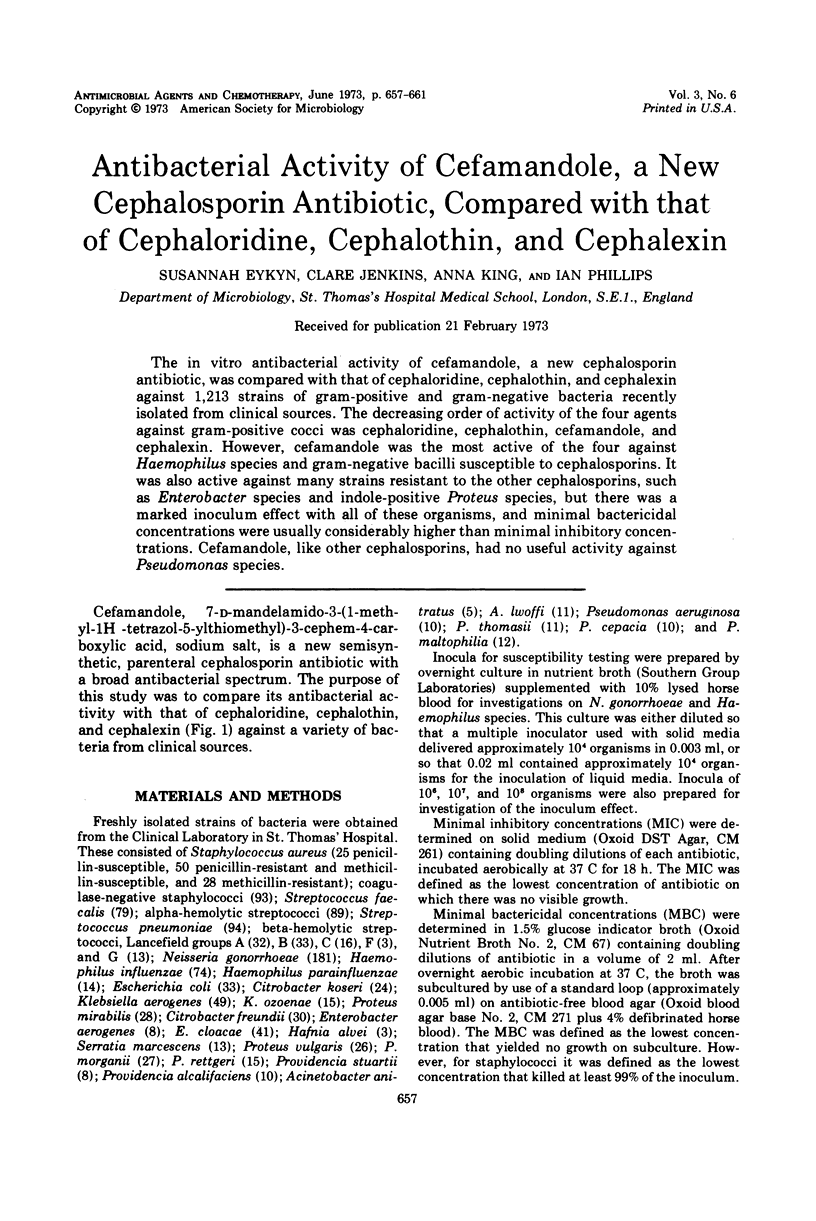
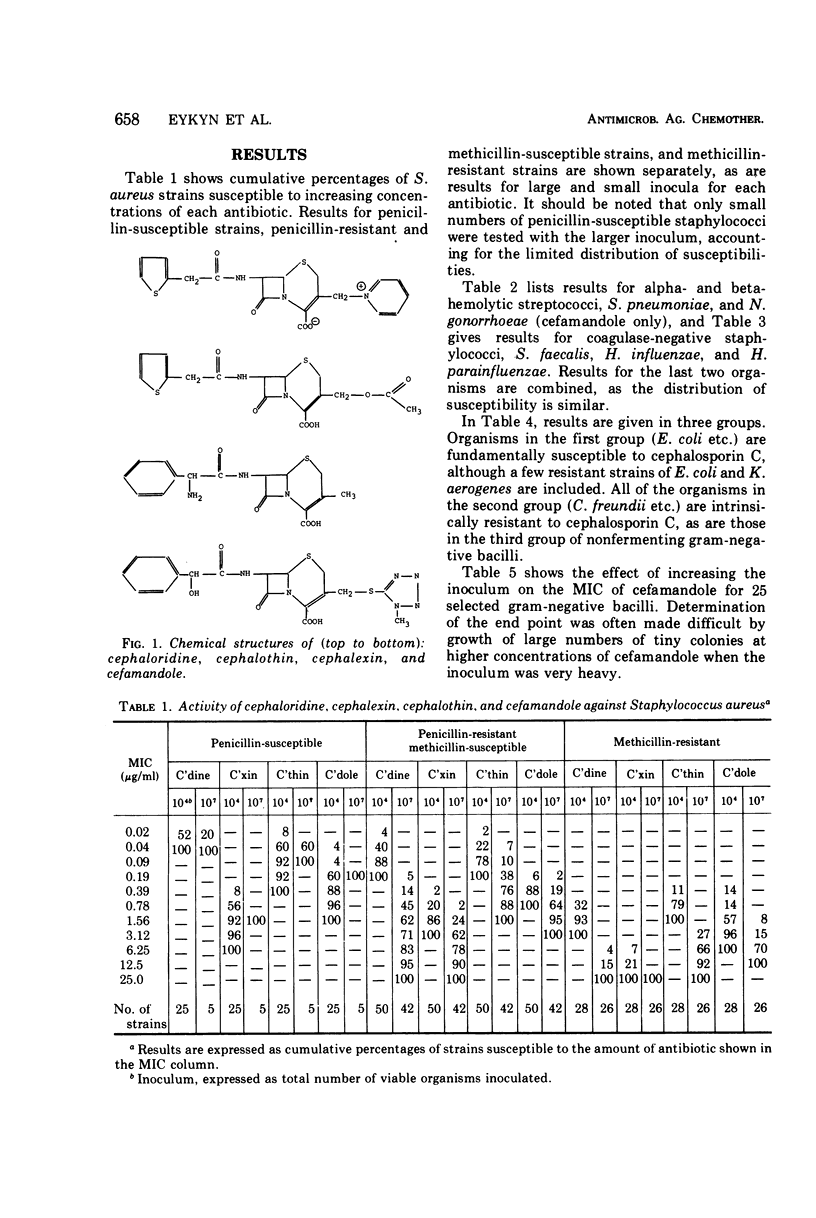
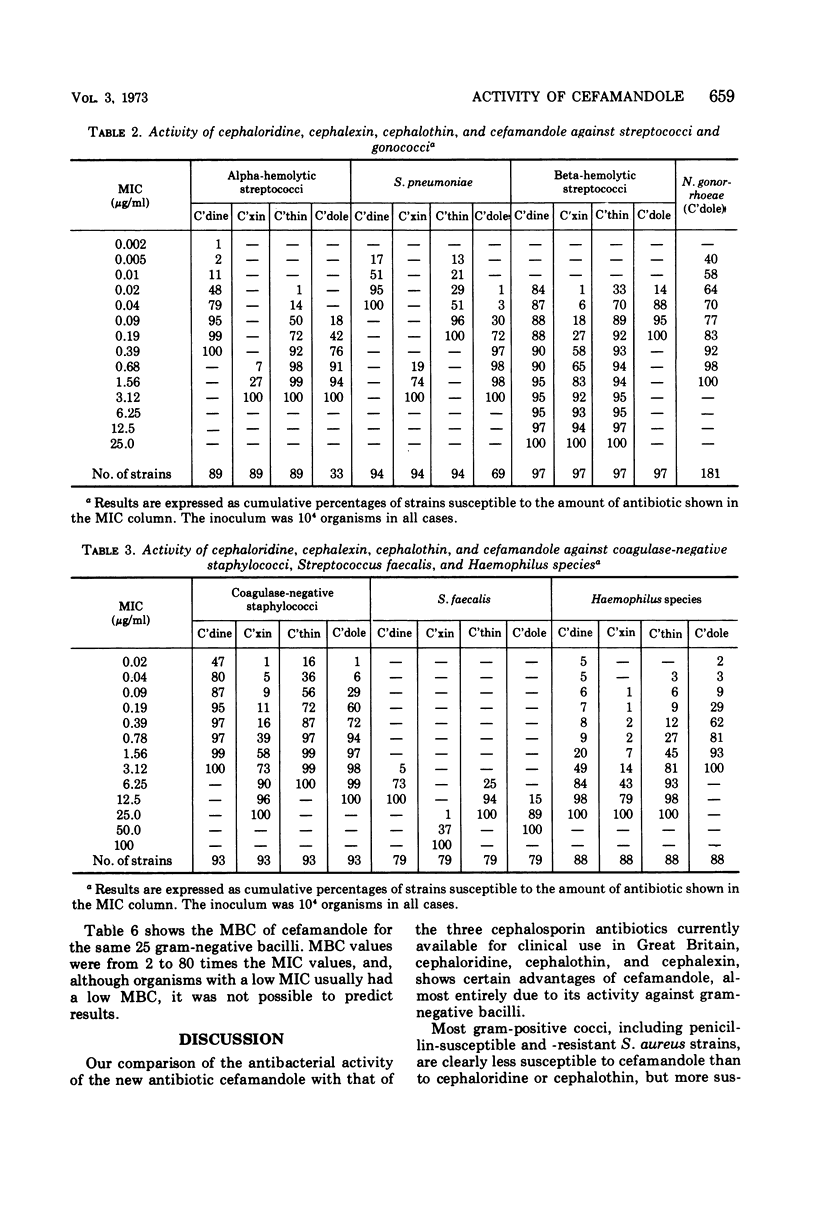
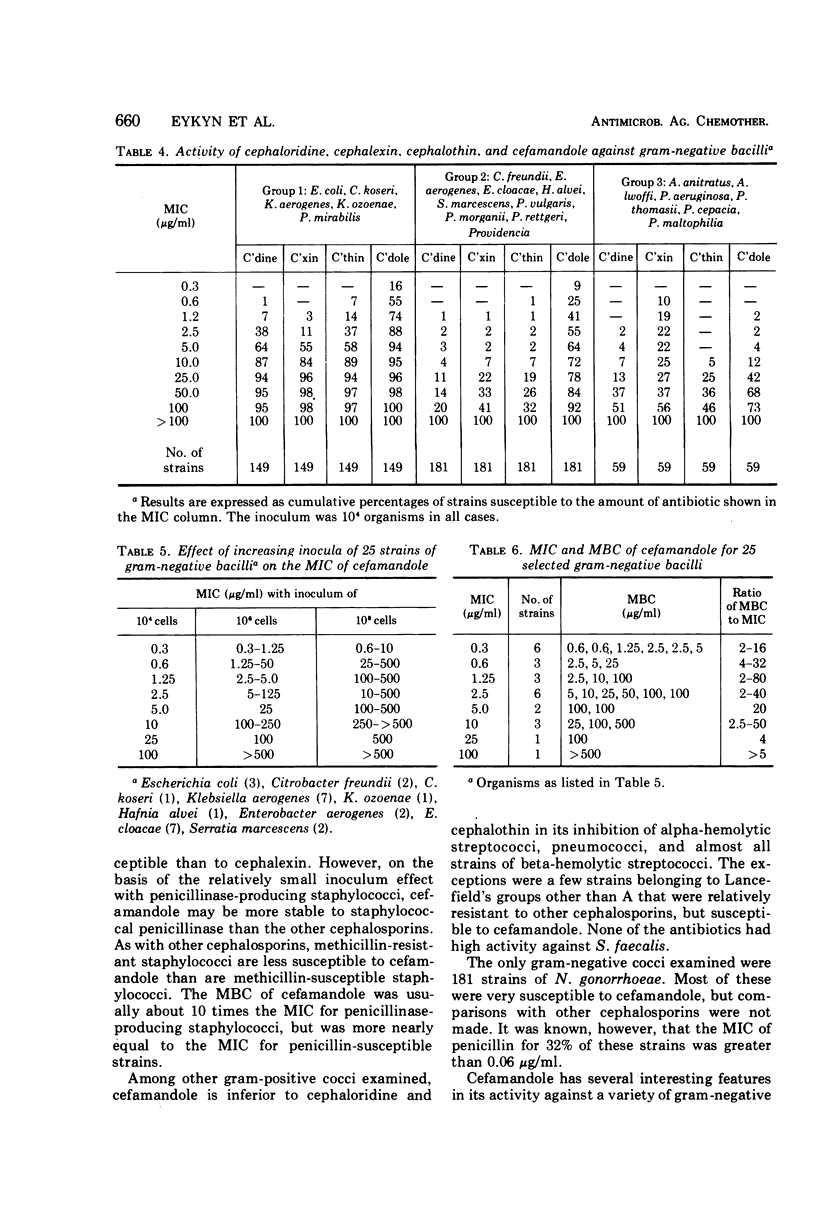
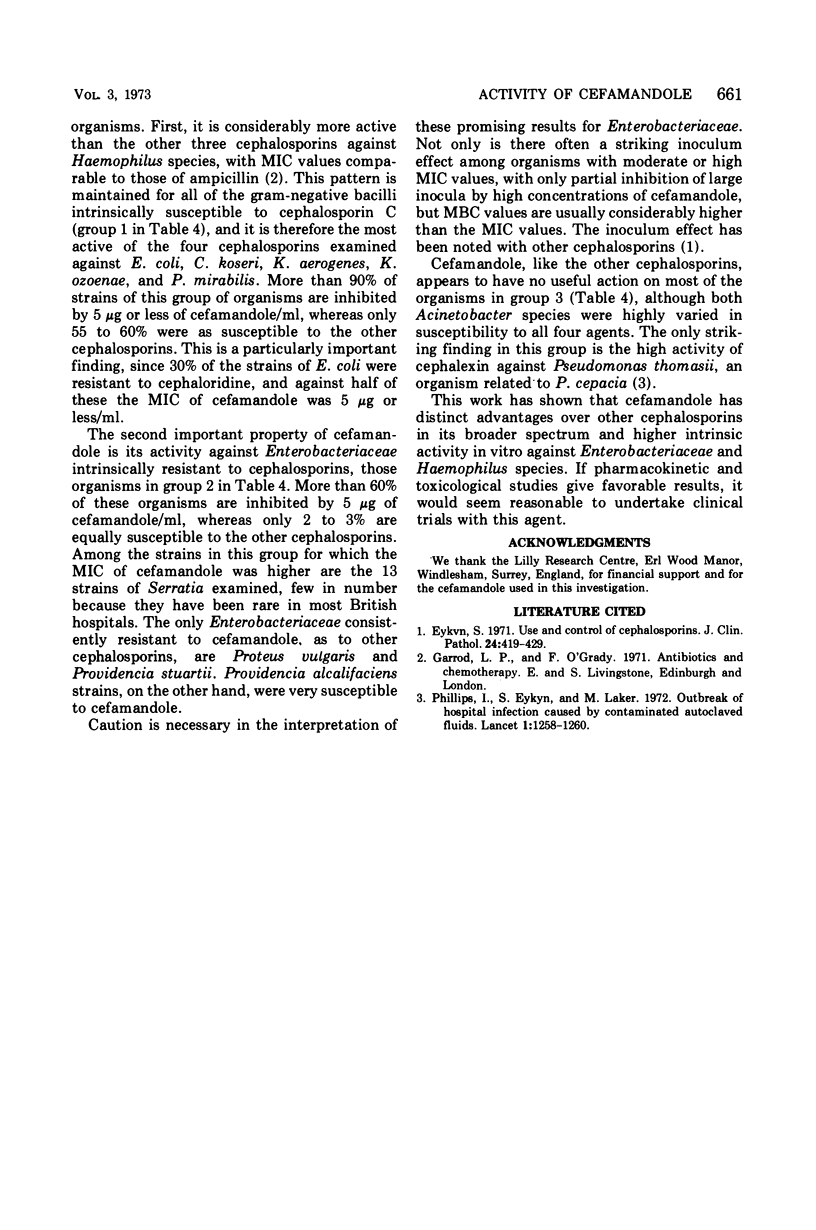
Selected References
These references are in PubMed. This may not be the complete list of references from this article.
- Eykyn S. Use and control of cephalosporins. J Clin Pathol. 1971 Jul;24(5):419–429. doi: 10.1136/jcp.24.5.419. [DOI] [PMC free article] [PubMed] [Google Scholar]
- Phillips I., Eykyn S., Laker M. Outbreak of hospital infection caused by contaminated autoclaved fluids. Lancet. 1972 Jun 10;1(7763):1258–1260. doi: 10.1016/s0140-6736(72)90981-6. [DOI] [PubMed] [Google Scholar]


